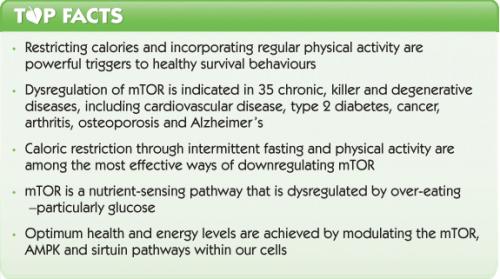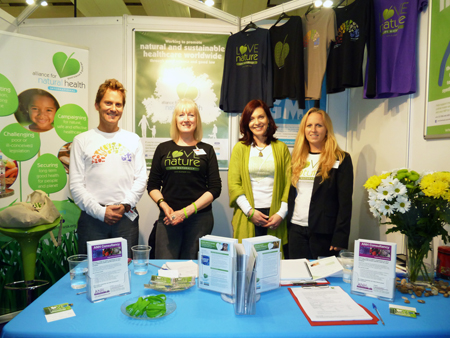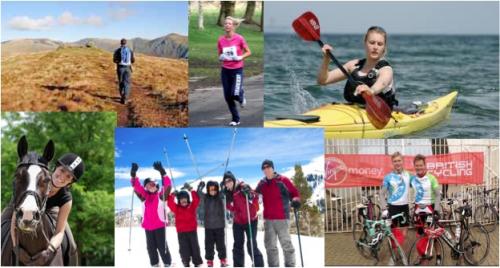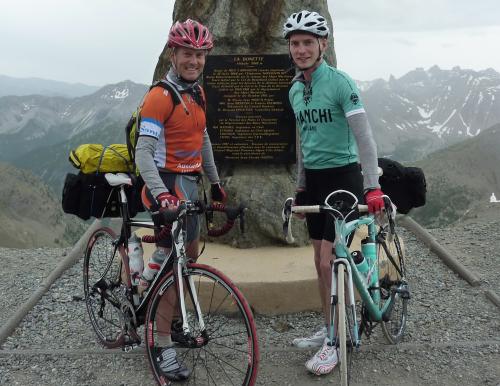Content Sections
By Rob Verkerk PhD, executive and scientific director, ANH-Intl
The greatest challenge most people in health are suffering, especially in later life, is one of 35 chronic diseases, including heart disease, type 2 diabetes, cancer, dementia, arthritis and obesity. Most people end up on 4 or more medications in later life in an attempt to treat these diseases — but the drugs usually don’t work and often cause side effects.
So what if there was another way of dealing with many of these chronic diseases? One that could effectively reset your metabolism so that you could not only be disease-free in later life, but enjoy a life bounding with energy and vitality, allowing you to live life to the full?
That was the theme of my presentation at this year’s camexpo in London last weekend. The slides from my presentation, entitled “mTOR and caloric restriction: the ultimate weight loss/fitness gain protocol” can be sent on request. I’ve given some key scientific references in the slides for the presentation, which I’ve omitted here for the sake of simplicity.

Following is a précis of my talk. I hope it helps to provide not only some guidance, but also some good reasons why it’s so important to incorporate caloric restriction and increased physical activity into your daily life.

ANH International's stand at CAM expo
Diets: fads that work, and fads that fail
Over the years, a wide range of diets have been proposed, some of which have worked better for some than others. Very few have contributed to lasting benefits. Some, like the low-fat diet, have even contributed further to chronic disease and obesity. Most have focused on what to eat, rather than on looking at when not to eat, or meal frequency. That’s what caloric restriction is all about, and for it to be truly effective, it can’t be considered without giving at least equal priority to your exercise regimen. But for it to be effective, and for a person to be compliant with it, it really helps to understand why.
Paleo on the inside
There’s no escaping the fact that our genes have changed precious little since paleolithic times, between 10,000 and 50,000 BC. But the changes to our lifestyles, particularly over the last 50 years, are unprecedented. It is these changes, particularly the over-abundance of simple carbohydrate foods, coupled with sedentary behaviours, that cause changes in genetic expression that lead to the 35 or so chronic diseases that plague our society.

Overeating and sedentary behaviour is at the heart of chronic disease
Intricately balanced….for our previous existence
Our genes are incredibly well adapted to a hunter-gatherer lifestyle. This lifestyle essentially involved cycles of great activity, generally linked to food procurement, and rest. We also needed to be adapted to cycles of ample food availability (feast) and famine. To cope with these extreme cycles, selection pressure drove those with ‘thrifty’ genes to be selected over those without. These genes allowed us not only to have highly efficient means of fuel utilisation, but probably even more importantly, highly efficient means of fuel storage. Our body’s main fuels include adenosine triphosphate (ATP), glucose and fat. Essential to our control of glucose is the insulin sensitivity of our cells.
Our fuel storage systems, on the other hand, include muscle glycogen and fat. These systems, themselves regulated by a complex endocrine control system involving mTOR, AMPK, sirtuins and nitric oxide synthase (NOS), fall apart if our lifestyles deviate too far from those to which these systems are adapted. And that’s just what’s happened to the majority of those suffering chronic disease today.
Protein kinase pathways: mTOR, AMPK and sirtuins
Let’s start with mTOR, the master controller of protein synthesis. It gets its name from its function as the mammalian Target Of Rapamycin. And rapamycin, in turn, is an immune-suppressing natural product discovered in 1975 in a Streptomyces soil bacterium found on Easter Island, known locally as Rapa Nui. Analogues of rapamycin are now used to prevent tissue rejection following transplantation.
So what is mTOR? It’s essentially a complex nutrient-sensing pathway, driven by ‘communication enzymes’ called kinases, that regulates fundamental processes linked to protein synthesis in the body, including cell growth and survival, mRNA and gene transcription. It exists in two complexes, complex 1 and 2.
mTOR complex 1 (mTORC1) is more fully understood, mainly because it lends itself to study because it can be easily inhibited by rapamycin. It is highly sensitive to nutrients like glucose and amino acids, which cause it, along with insulin, to be upregulated. And excessive upregulation is bad for us. Very bad for us. Conversely, rapamycin and nutrient deficiency, better known as caloric restriction (CR), are two things we know that downregulate it. Balancing (modulating) the function of mTORC1, by exposure to appropriate amounts of glucose, other nutrients and insulin, is critical to maintaining the insulin sensitivity of cells, and consequently good health and wellbeing. Thirty-five of our most troublesome chronic, killer and degenerative diseases, from the gamut of cardiovascular diseases, type 2 diabetes and cancer, to arthritis, osteoporosis and Alzheimer’s, are linked directly to dysregulation of mTOR and the resulting insulin resistance. While the functions of mTOR complex 2 are less well known, mainly because it’s harder to study as it’s not inhibited by rapamycin, it also has vital, closely-related functions. One of the most important is to act as part of a negative feedback loop for mTORC1.

The mTOR network. Source: Oncogene. 2010; 29: 3733-3744
Put simply, dysregulation of mTOR, along with the diseases that occur as a result, is caused by inappropriate gene expression, in turn triggered by excessive exposure to insulin and nutrients, especially glucose. While Big Pharma is desperately trying to find drugs to try to correct mTOR dysfunction, nothing is likely to be more effective than fasting more often and exercising more, the very things to which it evolved to respond. Therein lies the importance of CR combined with physical activity, survival behaviours born out of our hunter-gatherer past, and ones with which we still need to engage if we’re to live long, healthy, disease-free lives.
Like all systems in the body, mTOR doesn’t function on its own. One of its most closely allied kinase pathways is called AMPK, which stands for 5’-adenosine monophosphate (AMP) kinase. While mTOR acts as the master controller of protein synthesis, AMPK is the master switch for our cells’ fuel homeostasis. While controlled by the AMP:ATP ratio in cells, it regulates vital cellular functions, such as glucose uptake into the cell, oxidation of fatty acids and production of our cellular energy factories, the mitochondria. To be strong, you need a high density of mitochondria in muscle cells. It’s this loss of mitochondrial reserve, caused by sedentary behaviour and reduced levels of physical activity — especially with age — that leads to so many of the health challenges faced in later life. The AMPK pathway quintessentially reflects that oft-expressed adage: "If you don’t use it, you’ll lose it".
Having enough mitochondria is one thing. But if you want to be physically active and capable, you also need them to work as well as possible and produce the necessary amounts of cellular energy in the form of ATP. To do this, you need another family of kinases, known as sirtuins. Seven have been identified, three of which work within the mitochondria. Downregulation of sirtuins, caused especially by lack of physical activity, is directly linked to key diseases, especially the plethora of cardiovascular diseases.
CR and physical activity: the keys to protein kinase modulation
By now, I hope it’s clear just how fundamental the correct regulation, or modulation, of these protein kinase systems is to our health and wellbeing. Some find it easier to understand from the other perspective: our current sedentary lifestyles, including our over-eating and the fact we never have to move far to procure our next meal or snack, are causing forms of gene expression that were never intended. These novel patterns of gene expression are making our bodies increasingly dysfunctional.
Following is a summary of some of the ways you can help modulate the mTOR, AMPK and sirtuin pathways in your body to help you achieve optimum health and energy levels.
CR guidelines/options
- 25% reduced energy intake
- 18 h fasts 2-3 times week
- 12 h fasts 6 days/week
- Alternate day fasting (<600 kcal/day on fast days)
- 5:2 intermittent fasting (the ‘fast diet’)
Physical activity guidelines/options
- Engage in one hour daily of raised heart rate (HR) activity
- Minimum 7 hours/week of moderate/intense activity, of which at last 3 hours should include strength or resistance training. The rest should involve cardiovascular training. Anyone with any known health condition should consult a suitably qualified health practitioner or personal trainer before engaging in any training programme
- Spread out your activity during the week; don’t compress it into 1 or 2 days
- Engage at least once a week in some form of extended (>2.5 hours) endurance activity
- Exercise at the end of your overnight fast (of over 12 hours) at least twice each week
- Prefer outdoor activity over indoor training, because it has many benefits that go beyond the purely physical.
Note: when combining resistance or strength training with cardiovascular training, always do the resistance work first, or face the risk of your body catabolising (breaking down) your muscle! To avoid these risks, you can simply do the strength training on different days to your cardio training.
Food choices/food frequency guidelines
- Always maintain at least 5 hours between any meal (i.e. don’t snack)
- Consider eating two meals daily, not three
- Drink only water between meals
- Eat protein at the start of each meal, and always with any carbs
- Remove/minimise starchy carbs (i.e. go low-GL)
- Use vegetables (not starchy carbs like pasta, rice and potatoes) and fruit as your key sources of carbohydrate
- Minimise protein and fat damage from cooking
- Incorporate adequate healthy fats (e.g. cold pressed, unfiltered virgin olive oil, MCTs from coconut, omega-3s from cold-water fish and even undamaged saturated fats from organically raised meats) in your diet
- Maintain your phytonutrient spectrum, i.e. ‘eat a rainbow every day'.

Find your favourite outdoor activity and make it part of your regular training and goals
Setting goals
For many people, finding ways of incorporating physical activity into their lives presents one of the biggest obstacles. In a short piece like this, it’s hard to offer much in the way of guidelines; suffice to say, there are three golden rules that I’ve seen work, including for myself, over and over again:
- Buy some body composition scales to you can measure your weight, muscle and fat mass
- Set a goal for where you want to be in, say, 6 months, ensuring it involves specific levels of weight loss, muscle gain and fat loss
- Set a goal for, say, 6 or 12 months' time for a major physical challenge. It should be a big enough challenge to make you have to work for it, even frighten you a bit! Ideally, you should share this challenge with at least one other person, to help keep you motivated. For example, if you are able, it could involve climbing a mountain or cycling 50 or 100 miles. If something like that is out of your reach, then choose another goal that you can strive for. Ideally, your goal should involve the major physical endeavour you are incorporating into your training, and that should, in turn, be one you can identify yourself with socially.
Epilogue
For me, and for those who know me, it’s easy: I’m known not only as a scientist who is passionate about seeing a transformation in healthcare, and a father — I’m also known as a cyclist. It’s a tough one trying to incorporate time for activity into a busy life, but for me, one of the big changes has been to ride into work three times a week. That’s 25 miles each way, and largely off road. I don’t always cycle in the same way either: sometimes I ride very hard, whereas other times I take it easy, relishing the joys of being outdoors in the countryside. But yes, it means setting off very early indeed!
And for good measure, while recent goals included cycling the UK’s Coast to Coast, the Alps and the Pyrenees, my 25-year-old son, now a medical doctor, and I are considering cycling the Khardung La pass in the Himalayas next year, one of the highest roads in the world! But clouding our decision, going back to the Alps continues to vie for top position, such was the inspiration gained from our last visit in 2012!

Rob (left) and Misha (right) victorious at the top of Col de la Bonette, French Alps, June 2012








Comments
your voice counts
19 February 2022 at 8:40 pm
Fantastic article motivating and inspiring to new challenges!
Your voice counts
We welcome your comments and are very interested in your point of view, but we ask that you keep them relevant to the article, that they be civil and without commercial links. All comments are moderated prior to being published. We reserve the right to edit or not publish comments that we consider abusive or offensive.
There is extra content here from a third party provider. You will be unable to see this content unless you agree to allow Content Cookies. Cookie Preferences